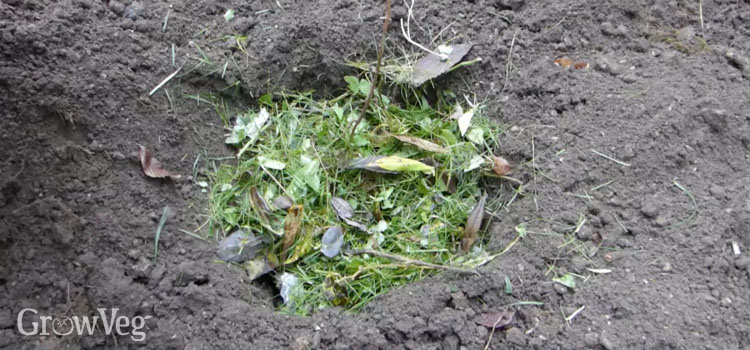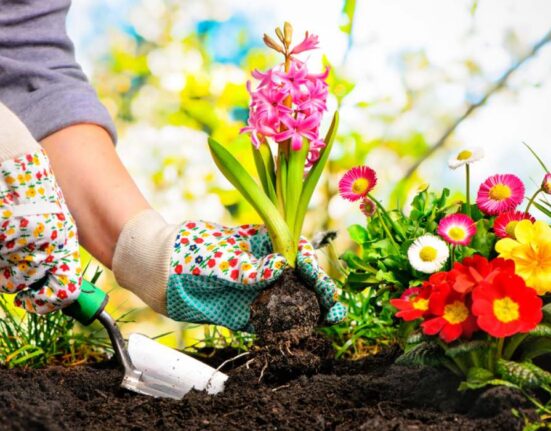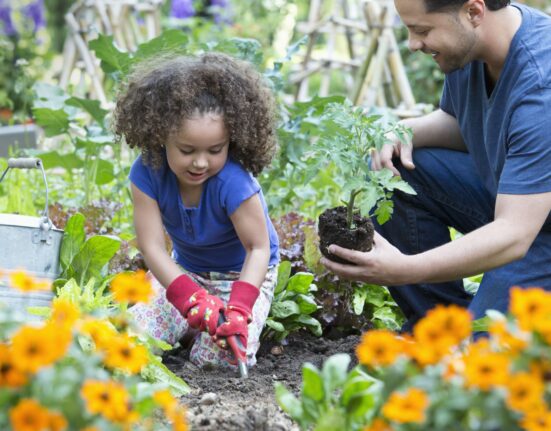Every year, more and more people are becoming interested in growing their own fruits and vegetables. If you’re looking to get started, a vegetable garden can be the perfect entry point into horticulture. There are many benefits to growing your own food as well as numerous resources to help you do so. To help you get started, we’ve put together some basic tips on how to prepare your soil and then plant a vegetable garden at home.
Grow your own food: The benefits of home food production
Growing one’s own food is a great way to support your local community and economy, as well as have more control over what you’re eating. The same crops grown in a large-scale, commercial operation may contain residues from bio-pesticides, herbicides, and fungicides.
Bio-pesticides and herbicides are chemicals sprayed onto a plant to, for example, kill pests that might be harming the crop. However, residues from these sprays often make their way into the food we eat, negatively affecting human health. By growing your own food, you can avoid this problem and also avoid the high cost of specialty foods that are grown outside of the normal food chain.
How to prepare your soil for a vegetable garden
Before you plant a vegetable garden, you’ll need to get your soil ready. Begin by turning over rocks and other heavy objects in your soil to help aerate it and make it more absorbent. You can also add manure, compost, or other organic matter to help build up the texture of the soil and make it easier to retain moisture after planting.
Start with a vegetable garden planting schedule
Now that you’ve prepared your soil and know when to start planting, you’ll also want to know when to expect your vegetables. Start with a vegetable garden planting schedule that will help you get an idea of when to expect your first harvest. If you’re planning to grow a specific vegetable, you can also check out an online database of when specific vegetables will be ripe.


You can also consult the USDA’s plant hardiness zone map to help you determine the best time to plant your garden. If you’re cultivating a specialty crop (e.g. a type of vegetable that is particularly difficult to grow or is especially in demand), you may also want to consult with a local Extension agent to ensure you’re planting it at the appropriate time.
Dig down to expand the depth of your garden
Many vegetables are best grown in a garden that is at least 12 inches deep. If you’re getting a small-space garden started, you can dig down and expand the depth of the bed to make it more suitable for growing these crops.
For example, in a 12” x 12” bed, you would need to dig 16 inches down to create a 24” x 12” bed. When you do this, you’ll want to make sure to add in organic matter, such as compost and manure, and add in grit or sand to improve the drainage of your bed. You can also use a foot-mounted cultivator to help you dig and level your soil. You can then use your planting schedule to plan out when to plant each vegetable.
Add in organic matter to improve the texture of your soil
Adding organic matter is one of the most important steps you can take when preparing your soil for a garden. Organic matter is a plant-derived material that is often lost from the soil due to tilling, watering, or the use of synthetic fertilizers.
When you add in organic matter, you’re helping to rebuild the level of humus, a plant-derived material that helps to condition your soil and make it more absorbent. Organic matter also improves the texture of your soil, making it easier to maintain a healthy level of moisture after planting. Keep in mind that organic matter should be 2-5% of the total weight of your soil. You can help to increase the amount of organic matter in your soil by adding organic matter, tilling, and reducing the watering and tilling frequency of your soil.
Add compost and manures to build up stable, healthy soil
The final element you’ll want to add to your soil is compost, manure, or a combination of both. Compost is a material derived from organic matter and is great for improving the texture of your soil. Manure on the other hand is a byproduct of livestock and is rich in nitrogen.


Both of these products are great for building up healthy, stable soil and you can find more information on how to use them in your garden in our article on how to build up healthy soil. While you can buy compost and manure made for use in gardens, you can also make your own. Simply combine equal parts of finely chopped plant matter and paper, or you can use compostable materials (such as grass clippings, leaves, and the like).
Keep this in mind when planning your vegetable garden location
When you’re planning your vegetable garden location, you’ll also want to keep in mind several other factors.
First, you’ll want to consider the sun and shade in your area. Some vegetables, like tomatoes and peppers, will do better in full sun while others, like cucumbers, are best suited for shadier locations. You’ll also want to consider your local weather patterns and how they will affect the soil in your area.
If you live in an area that experiences heavy rainfall, you may want to consider growing your vegetables in a container. This will allow you to still garden and will help to protect your vegetables from the elements.
Conclusion
As you can see, growing your own food can be a rewarding and fulfilling experience. By learning how to grow your own food, you can support your local economy, avoid the use of pesticides and herbicides, and eat healthier, organic food at no extra cost. With a little preparation and patience, you can grow a healthy and nutritious vegetable garden at home.









Leave feedback about this